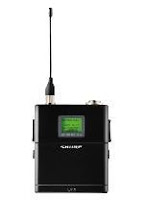
This device was designed on request and allows sequential operation of four Leds either to left or right direction, obtained by means of a 7555 CMos timer IC (IC1) wired as an astable multivibrator driving a Decade counter (IC2). This IC is set to count a sequence of four by connection of pin #10 to pin #15, but any sequence count in the 2-10 range can be set by choosing the appropriate pin connection. Obviously, LEDs, Transistors and their respective Base-limiting resistors must also be added or omitted accordingly.R1 is a variable resistor (Trimmer), used to set the desired speed of the LEDs. SW1 is a change-over switch that should already exist in your motorcycle, having a center-off position and Turn-left and Turn-right positions.D1, D3, D5 and D7 are the Turn-left LEDs; D2, D4, D6 and D8 are the Turn-right LEDs.
Parts:
R1_____________500K 1/2W Trimmer Cermet or Carbon R2______________47K 1/4W Resistor
R3,R4____________1K 1/4W Resistors
R5,R6,R7,R8_____10K 1/4W Resistors
C1_______________1µF 63V Polyester or electrolytic capacitor C2_____________220µF 25V Electrolytic capacitor
D1-D8__________LEDs Yellow ultra-bright types
Q1,Q2,Q3,Q4___BC337 45V 800mA NPN Transistors
IC1____________7555 or TS555CN or TLC555CP CMos Timer IC IC2____________4017 Decade counter with 10 decoded outputs IC SW1____________Vehicle Turn Lights switch (See Comments) Battery_________12V Vehicle battery


















